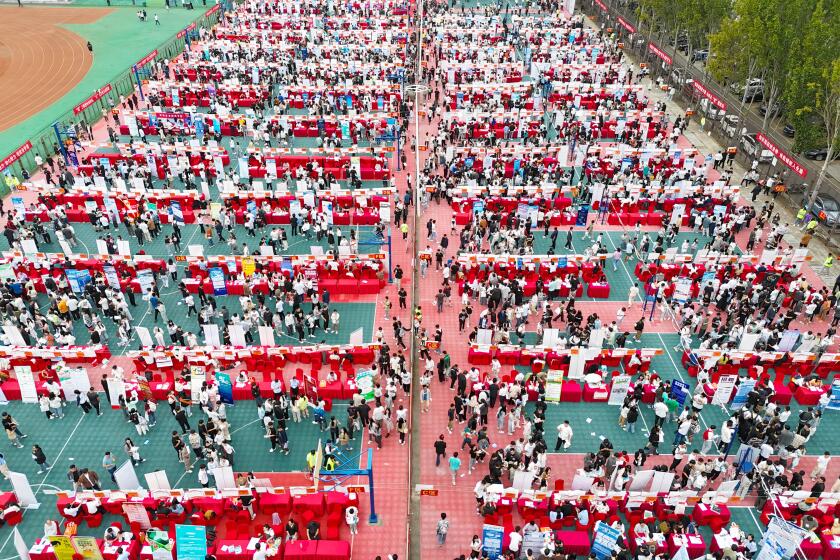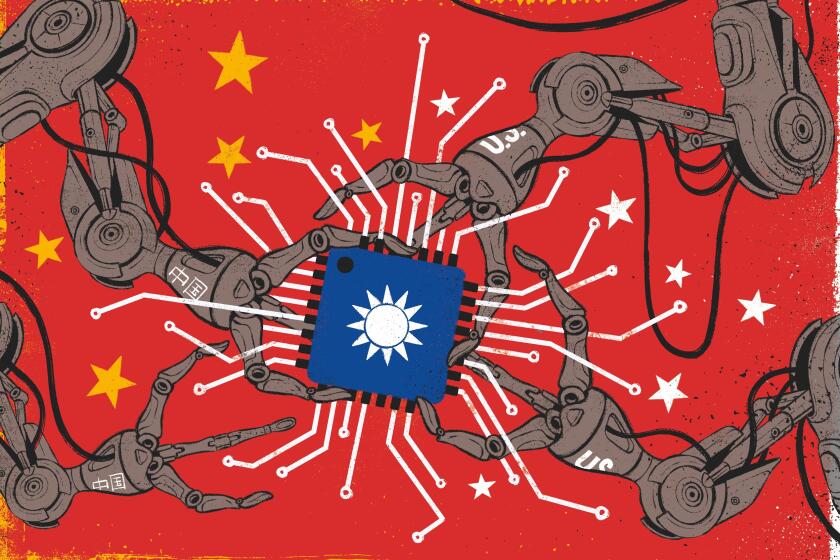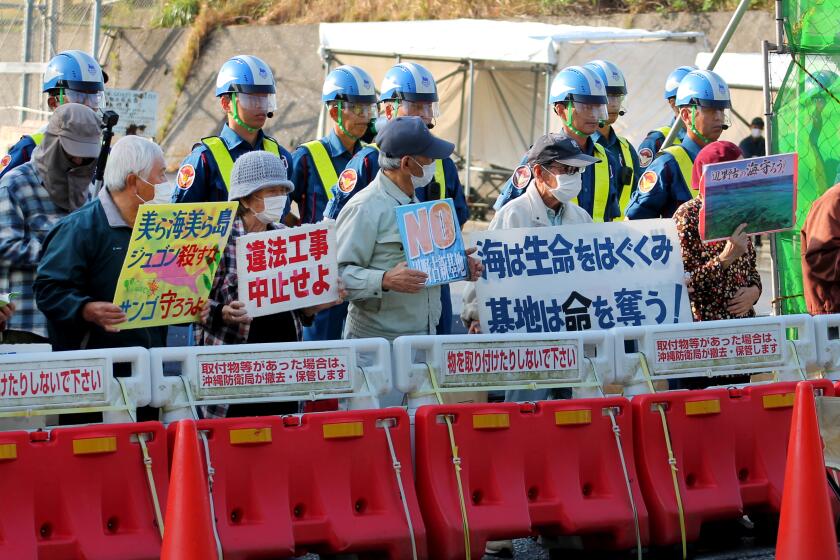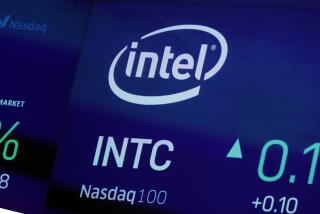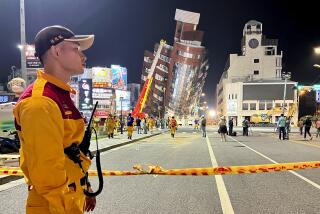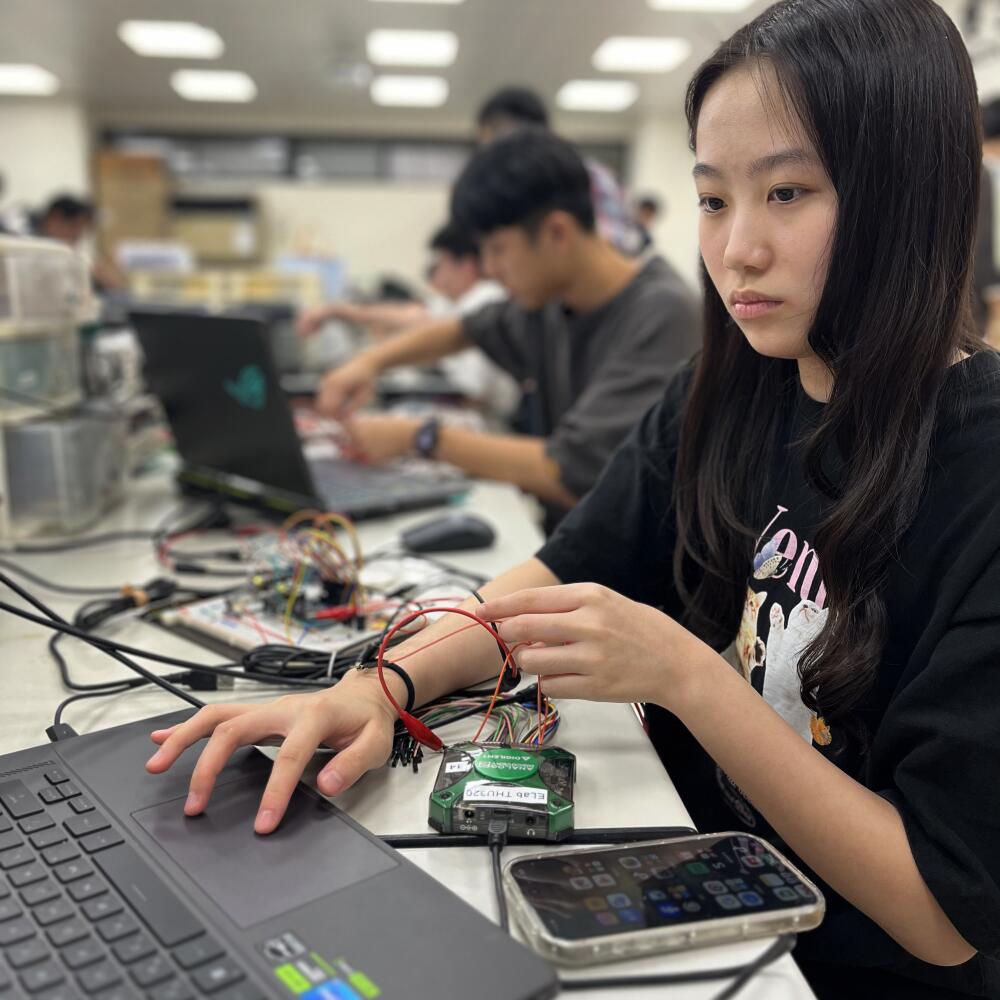
- Share via
HSINCHU, Taiwan — Build the technology of the future. Protect the nation from attack. Buy a sports car.
These were some of the rewards of working in the semiconductor industry, 200 high school students learned at a recent daylong recruiting event for one of Taiwan’s top engineering schools.
“Taiwan doesn’t have many natural resources,” Morris Ker, the chair of the newly created microelectronics department at National Yang Ming Chiao Tung University told the students. “You are Taiwan’s high-quality ‘brain mine.’ You must not waste the intelligence given to you.”
The island of 23 million people produces nearly one-fifth of the world’s semiconductors, microchips that power just about everything — home appliances, cars, smartphones and more. Furthermore, Taiwan specializes in the smallest, most advanced processors, accounting for 69% of global production in 2022, according to the Semiconductor Industry Assn. and the Boston Consulting Group.
But a pandemic-induced chip shortage, along with rising geopolitical tensions in Asia, have highlighted the fragility of the current supply chain — and its reliance on an island under the specter of a takeover by China.
Across the U.S., Japan, South Korea, Taiwan and China, the semiconductor industry is already short hundreds of thousands of workers. In 2022, the consulting and financial services giant Deloitte estimated that semiconductor companies would need more than 1 million additional skilled workers by 2030.
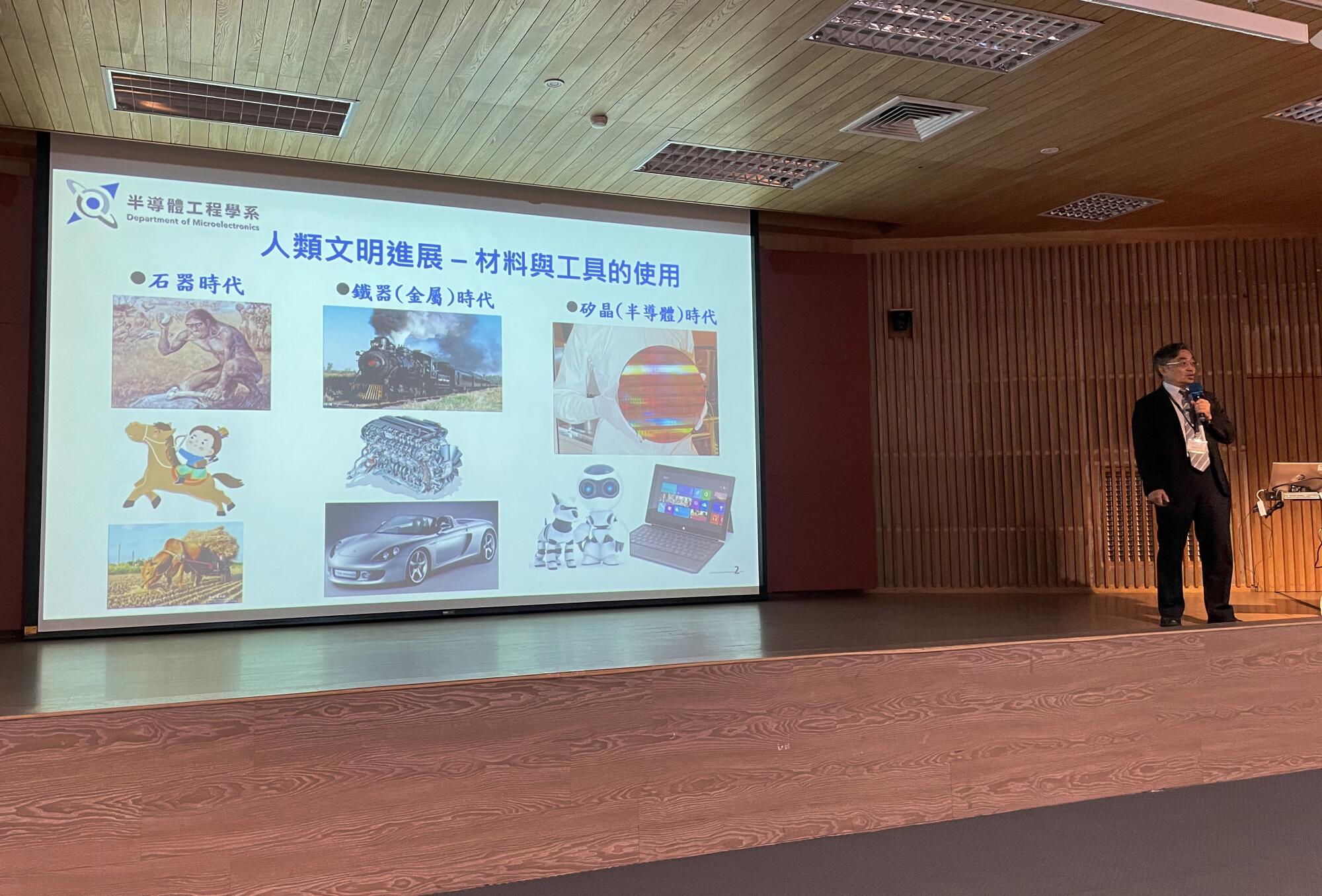
Seeking to maintain Taiwan’s status as the chip-making capital of the world, the government and several corporations here helped the university — known as NYCU — create the microelectronics department last year to fast-track students into industry jobs. Now the department was recruiting its inaugural class.
Wu Min-han, 20, who sat in the front row with his mother, didn’t need much convincing.
As unemployment rises in China, some young adults become ‘full-time children’ at home with their parents. Critics call it ‘gnawing on the elderly.’
He had first applied to college to major in mathematics, but dropped out after he lost interest in the subject. Then he read about the new microelectronics program and decided to apply. He’s waiting to hear back.
“This department could have a pretty positive impact on my future career prospects,” he said.
Others were torn.
Lian Yu-yan, 18, said that while the new department seems impressive, she’s also interested in majoring in mechanical engineering and photonics. She hopes to find a high-paid tech job after graduating from college, but wants to keep her options open.
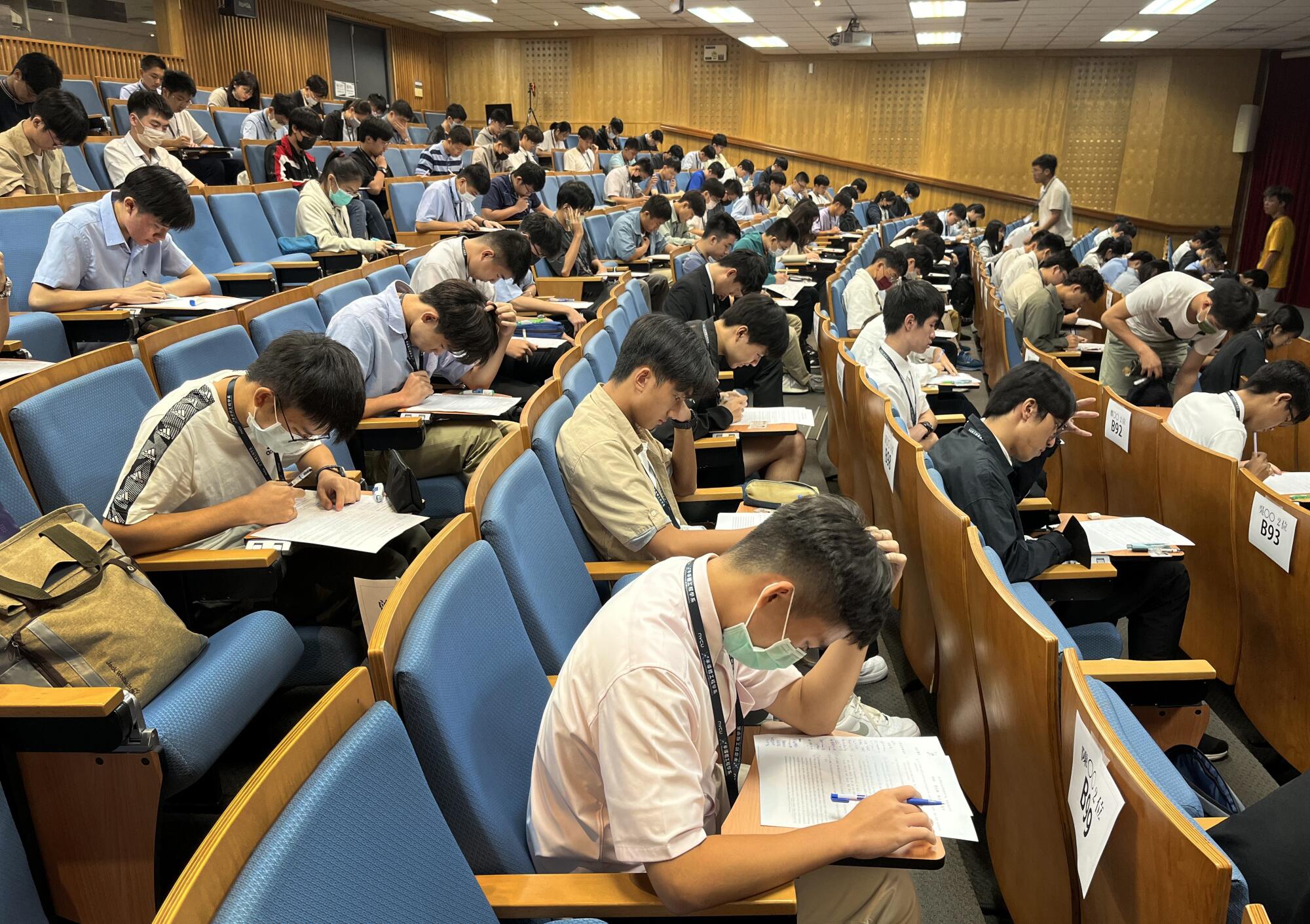
Her father, who accompanied her to the event, has worked in the semiconductor industry and sees high growth potential with the evolution of AI. However, that hasn’t done much to persuade his daughter.
“You can’t control Gen Z,” he said with a laugh and a shrug.
Many prospective students competing for the 65 slots in next semester’s program listed salary and job stability among their top considerations. In Taiwan, there are few industries that can compete with semiconductors on pay and prestige.
Taiwan Semiconductor Manufacturing Co. makes chips for iPhones, video game consoles and fighter jets. Now it’s being forced to choose sides.
As the rise of electric vehicles, artificial intelligence and other advanced technologies demand more semiconductors, many nations are making chip self-sufficiency a top priority.
In the U.S., Europe and Asia, governments have announced more than $316 billion in tax incentives for the semiconductor industry since 2021, according to Semiconductor Industry Assn. and the Boston Consulting Group.
A May report by those organizations projected that private companies will spend an additional $2.3 trillion through 2032 to build more facilities that make semiconductors, also known as fabrication plants, or fabs.
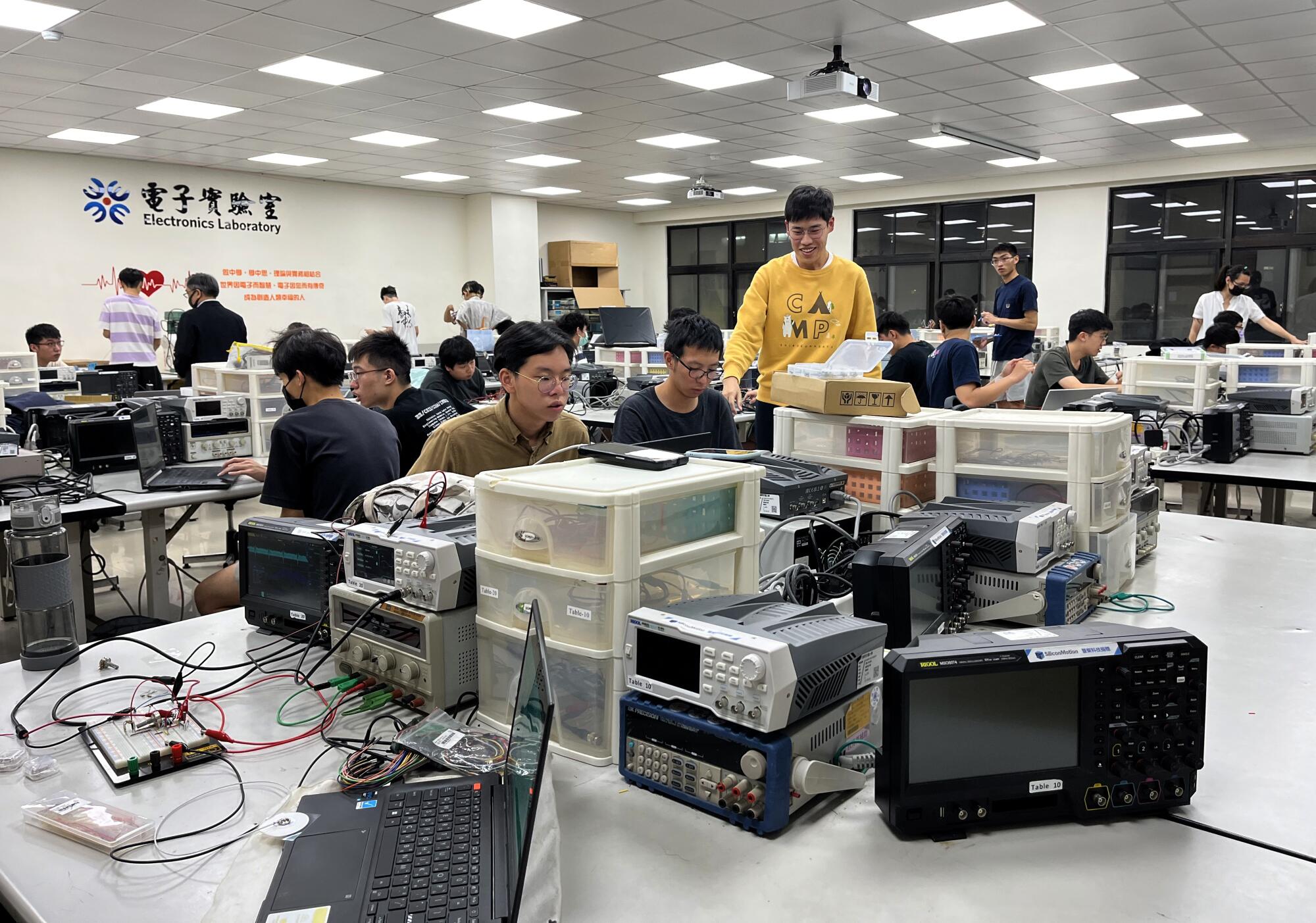
Meanwhile, the expansion of chip-making capabilities is exacerbating another shortage: in the people trained to make them.
As the global battle for talent heats up and Taiwan loses manufacturing market share, the island has even more incentive to cultivate its next generation of workers.
Known as Taiwan’s “silicon shield,” the semiconductor industry is considered so critical to the global economy that it could deter Beijing, which lays claim to the island democracy, from launching a military assault. Taiwanese often refer to Taiwan Semiconductor Manufacturing Co., the world’s largest chipmaker and a major Apple supplier, as the “sacred mountain protecting the nation.”
In his presentation, Ker gave another example of the industry’s indispensability. When Taiwan’s worst earthquake in a quarter-century hit in April, factory workers were evacuated but quickly returned — a sign, Ker said, of the manufacturing hub’s resilience.
But to Su Xin-zheng, a second-year engineering student at NYCU, the natural disaster response was representative of the drudgery required to keep churning out so many of the world’s chips.
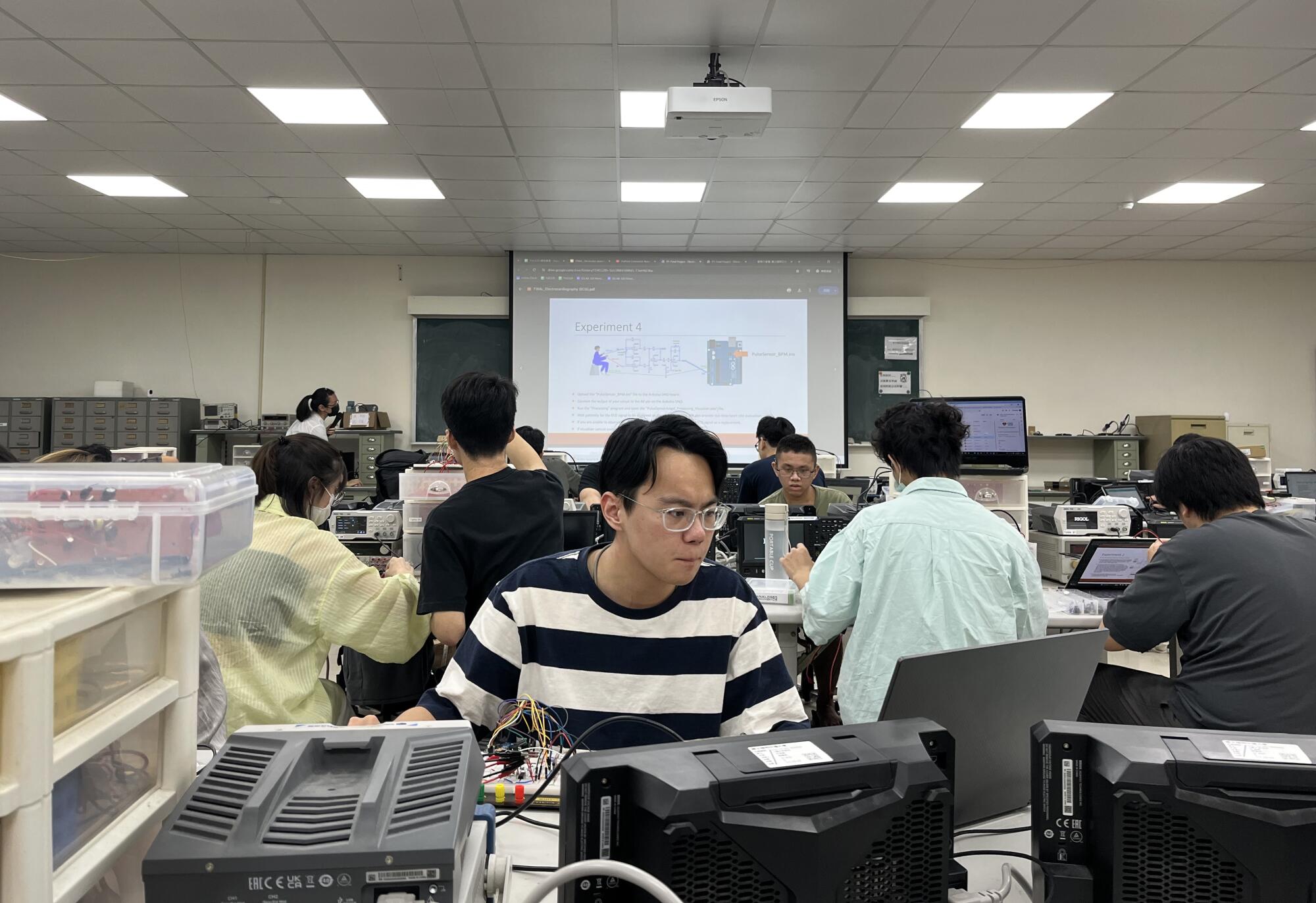
“People are always on call,” said Su, who added that he would prioritize having leisure time over a hefty salary. “We saw that they all went back in to protect the machines.”
Industry veterans evoke brutal hours and sacrifice when they describe how Taiwan built its semiconductor industry from the ground up. With black humor they speak, metaphorically, of ruining their livers by working through the night.
They fear that the younger generation is less inclined to such punishing work.
The 7.4-magnitude earthquake that struck Taiwan on Wednesday can provide vital lessons for Southern California as it prepares for the next big temblor.
In particular, the growing emphasis on work-life balance is eroding interest in jobs at the fabrication plants that Taiwan and TSMC are known for.
For the past two years, labor demand in manufacturing has exceeded that of other parts of the chip-making process, such as designing the circuit boards or packaging them after they are made, according to the local recruitment platform 104 Job Bank. Engineering students enrolled at NYCU said such jobs seemed draining, with lower pay than research or design positions.
Ting Cheng-wei, 23, frequents anonymous online forums to learn more about the salaries and job descriptions at different companies. That’s how he knows that manufacturing positions, which require full-body suits to guard against contamination and 12-hour shifts on two-day rotations, don’t appeal to him.
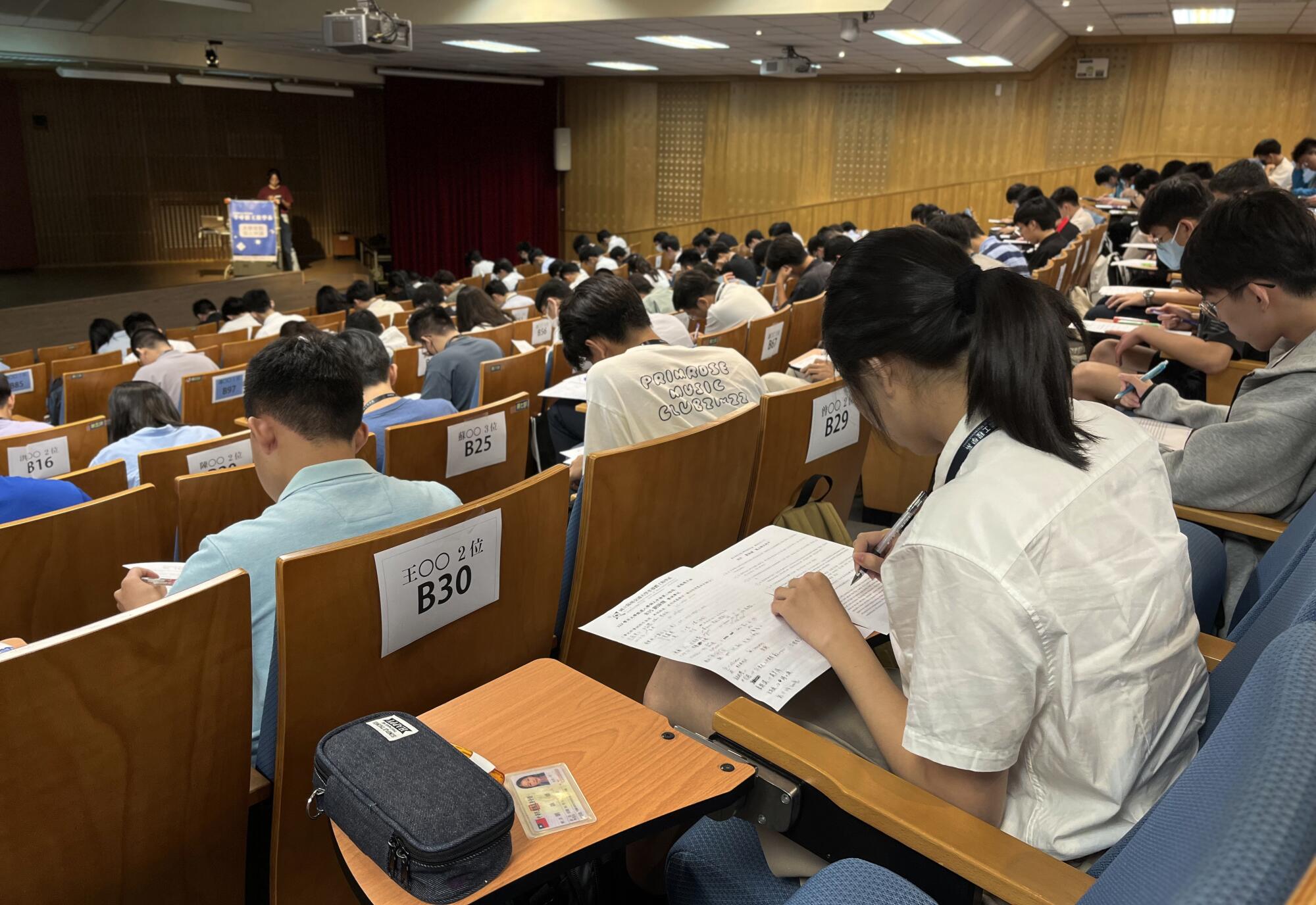
“Working in the fab seems like working as a laborer,” said Ting, a master’s student and teaching assistant at the university. “Why would I work at a fab when I can sit in an office with higher pay?”
He speculated that job shortages at semiconductor plants could be solved by simply offering more money.
That would be enough for 19-year-old Wei Yu-han, who was ambivalent about semiconductors after her first year studying mechanical engineering. After visiting a fab on a school trip, she thought the work seemed straightforward and well-paid.
Growing concerns over war with China have Japan’s southwestern islands scrambling to bolster defenses.
“I probably just brainwashed myself into liking it,” she said. “I can give up my freedom for money.”
At the end of the introductory seminar, all students in attendance took a short entrance exam as part of their applications. Still, enrollment in the new department is restricted by another squeeze on human resources — Ker added that the school is desperately looking to hire more semiconductor teachers as well.
Special correspondent Xin-yun Wu in Taipei contributed to this report.
More to Read
Sign up for Essential California
The most important California stories and recommendations in your inbox every morning.
You may occasionally receive promotional content from the Los Angeles Times.
